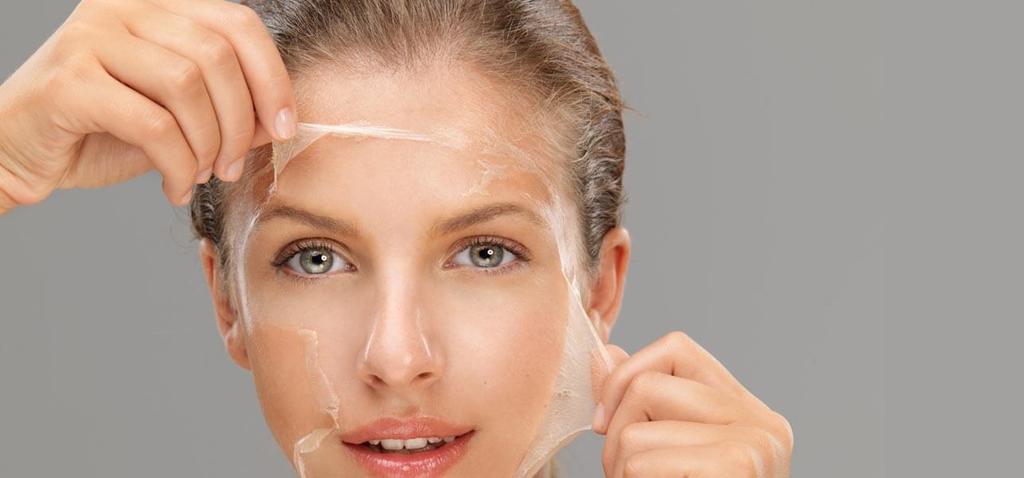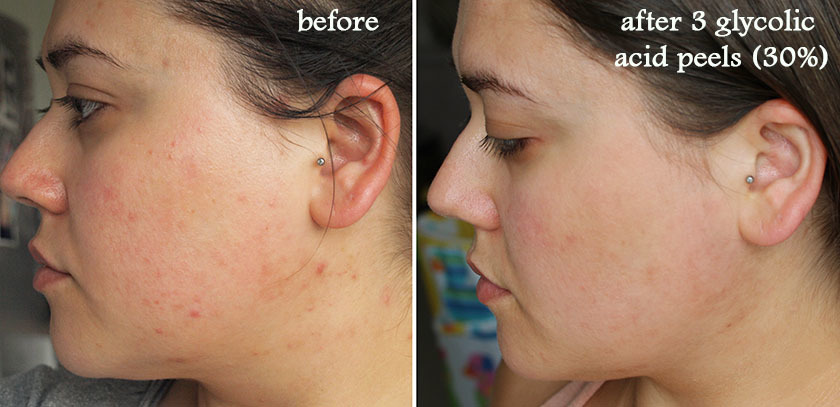5 Quick Tips About Glycolic Acid Peel At Home

Every women after her 30s start worrying about the changes in the skin. These early signs of aging are an ultimatum to bring their focus on the skin care routines that is necessary to fight these changes and maintain a healthy skin for long. An easy solution to do so is by applying glycolic acid peel.
This peel contains the glycolic acid which are derived from the sugar cane and contains the tiniest molecules of AHAs (Alpha Hydroxy Acid group). These molecules can easily penetrate through the pores and works by dissolving the glue for binding the dead skin cells firmly.
Benefits of using Glycolic Acid Peel
There are many benefits of using glycolic acid peel. If used regularly, one can feel the changes noticeable in couple of weeks itself. Here is why you should think about trying it yourself:
- Clears blackheads, whiteheads by clearing the blocked skin
- Reduces the dark spots
- Minimizes fine lines and open pores
- Brightens the complexion and provide elasticity and plumpness to the skin
- Glycolic acid peel is for acne treatment
- Stimulate the production of collagen
While the reasons are many, there are certain things that one should consider before jumping into using glycolic acid peel. Our facial skin is the most delicate part of our body and should be taken care with great caution. So, here are some important tips about using this peel at home without the assistance of a professional.
Tips to use Glycolic Acid Peel
Selecting the Right Product
If you are using this peel for the first time, you should go for a product that has not more than 6% to 8% concentration. Usually people believe that anything less than a concentration of 20% is useless and won’t have any visible effects on the skin. However, you need to go slow with this process. Products with high concentration are not recommended to be used at home. If, the proper usage and application is not maintained, it can cause severe long-term damage to your skin.
Moreover, the products with lower concentration are mild and can be used regularly without any concerns of side effects. And, with lower doses, you actually train your skin to get used to the acid and reap the benefits at the same time. The consistent use will surely help maintain a glowing and youthful skin for long.
Prepare your Face before using Glycolic Acid Peel
Glycolic acid peeling should be done after you have prepared your face for its application. As it is acidic in nature, it can react adversely to the wounds and cracked skin. If you have any skin problems such as cold sores and open wounds that have not yet healed, do not apply the peel before the skin is clear from these problems.
If there aren’t such issues, clean your face with cold water and pat it dry with a clean towel before applying the peel.
Working with Glycolic Acid Peel
Do not ever think that keeping this peel on your face for longer will make you look younger instantly. Everything has its own pace and letting it take its designated time helps in providing a safe and optimum result. Hence, always read the instruction on the product and apply it for the specified procedure.
Also, you need to understand the frequency of usage that would suit your skin type. This will differ from women to women. When you apply glycolic acid peel for the first time, look for the slight tingling. If this sensation is mild, do not be scared, it means that the peel is working. But, if you feel pain, wash the acid right away.
In the beginning, use this peel thrice in a week with a gap of at least a day. When the skin gets used to it, usually it will after a month, increase the usage to everyday.

When you should not use this Peel
There are cases when the use of glycolic acid peel should be avoided at all cost. Here is the list of those conditions when you should not start the use of this peel.
- If you have been through a microdermabrasion treatment recently, using this peel is a big no.
- If you are using Roaccutane or have recently stopped its usage, you should not use this peel. Roaccutane is an oral medication for treating severe acne.
- If your skin is too sensitive or if you own tinned skin, try to check with the first few applications. If you feel pain or burns, stop the usage.
- If you are out in the sun for most of the day and have not ensured any adequate protection regime, do not think about applying glycolic acid peel on your face, it may cause further problems.
Never Miss out on the Sunscreen after Applying the Peel
Once, you are done with the treatment, do the last trick by covering your face with a nice sunscreen. The skin becomes highly sensitive to UV radiations after the skin is treated with glycolic acid peel. The peel works by taking off the outer layer of your skin which actually protects you from the damaging sun’s rays when out in the open.
So, applying a sunscreen with higher SPF becomes even more important when you are using glycolic acid peel to treat your skin problems.
Prepare Glycolic Acid Mask at Home
If you are worried about including the expensive products in your monthly bills, here is what you can do to make one with ingredients present at your home. Sugar, Honey and Lemon are great source of glycolic acid. Mix these common ingredients to make your mask containing the benefits of glycolic acid.
Use one part of honey and one part of sugar with half a lemon’s juice and apply it on your face for about 10-12 minutes. Rinse this off with cold water.
The Verdict
Skin care is an important part of our daily routine. However, the extra care that it needs should never be overlooked. You can definitely reap the advantage of glycolic acid peel, but make sure to follow the right guideline for maximum and overall benefit.
About the Author Joyce Davis
I am Joyce, founder and the beauty editor behind Biotyful.net. I was born in Texas and currently living Wyoming. If you are wondering what led me into blogging about beauty and beauty products, then my hobbies and interests right from childhood, will be a perfect reflection of why I gravitated towards blogging.


